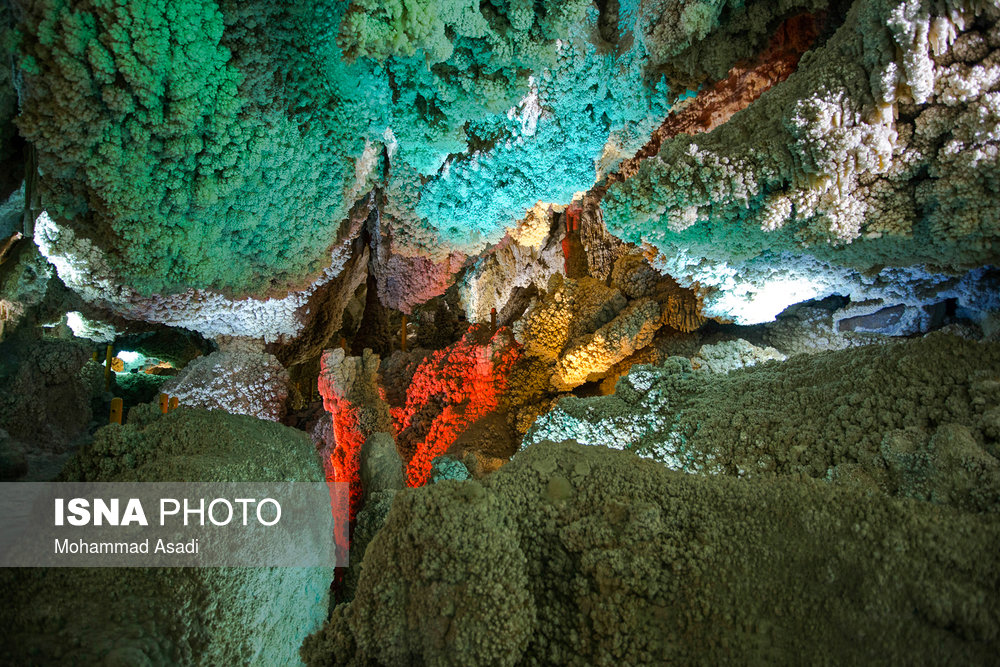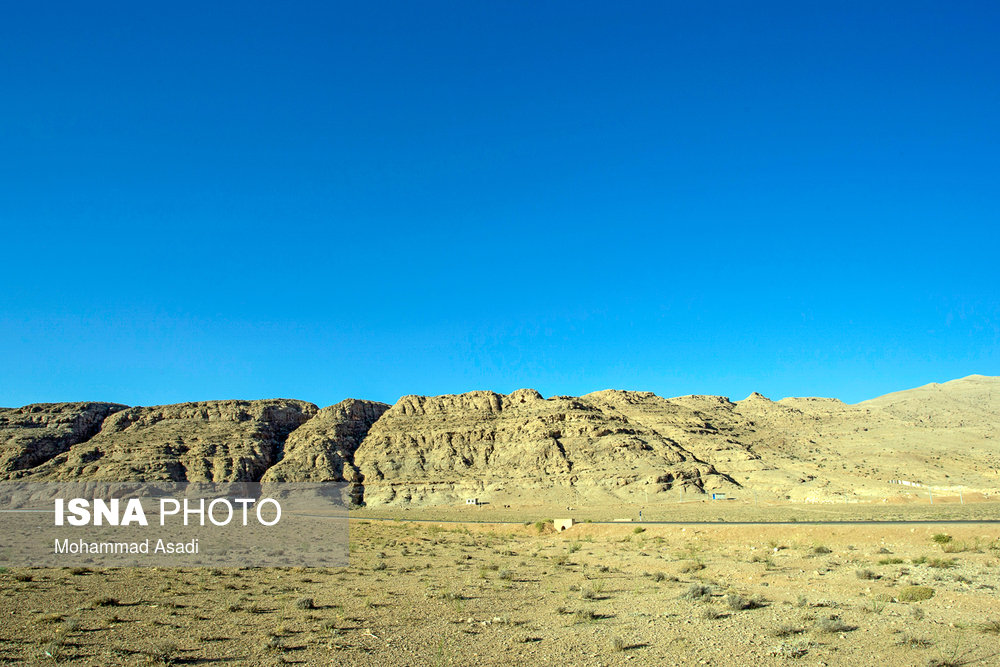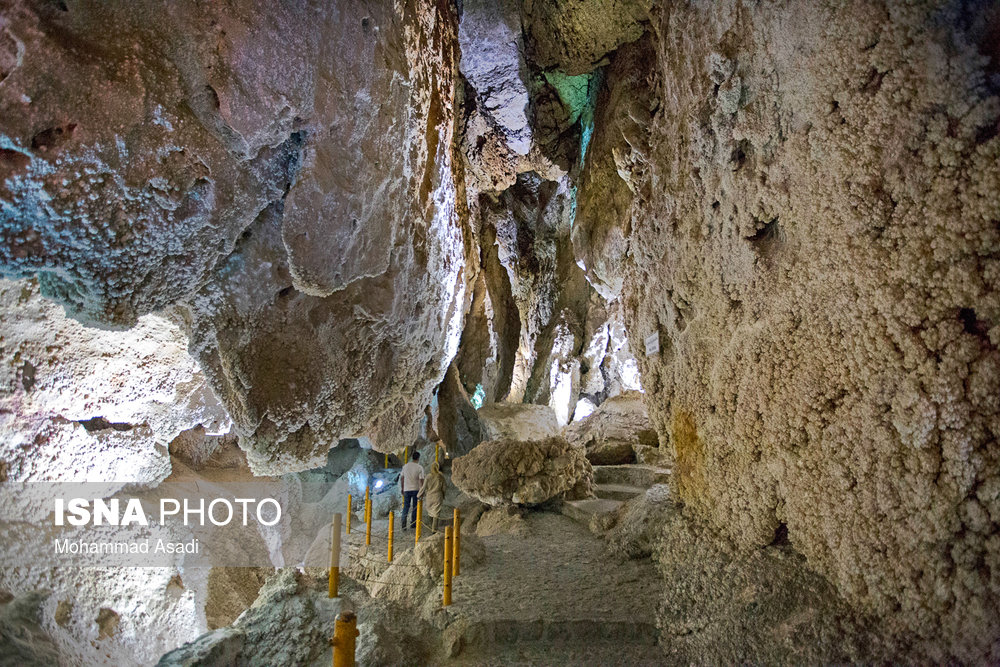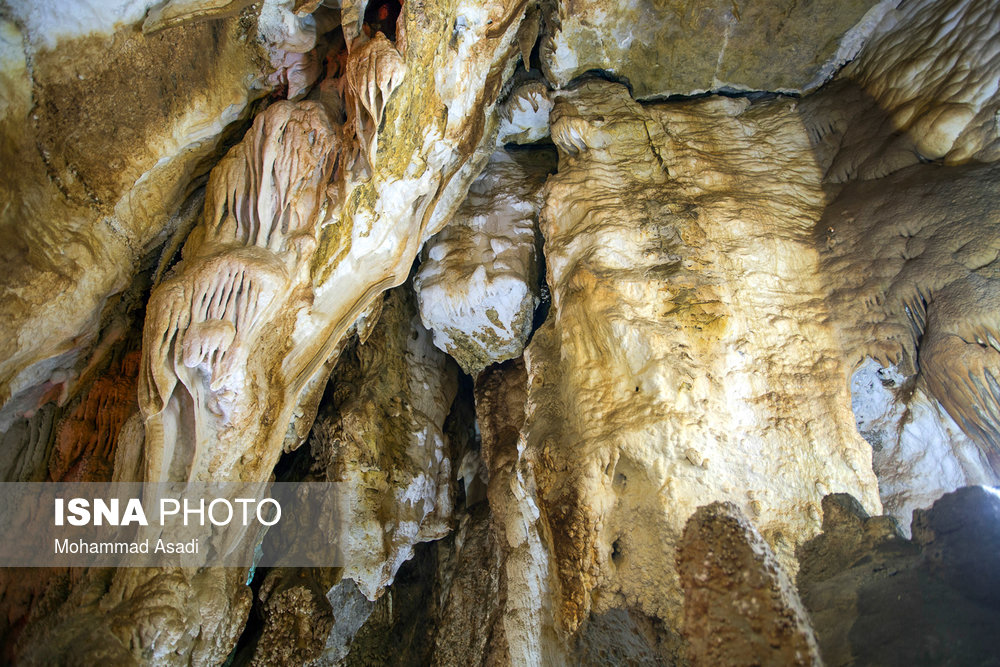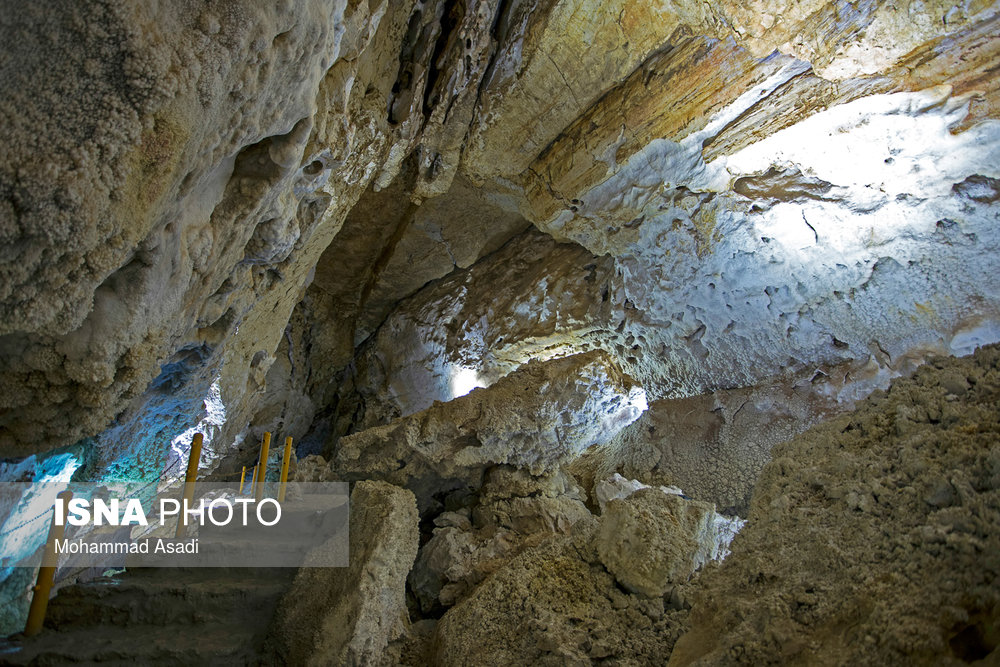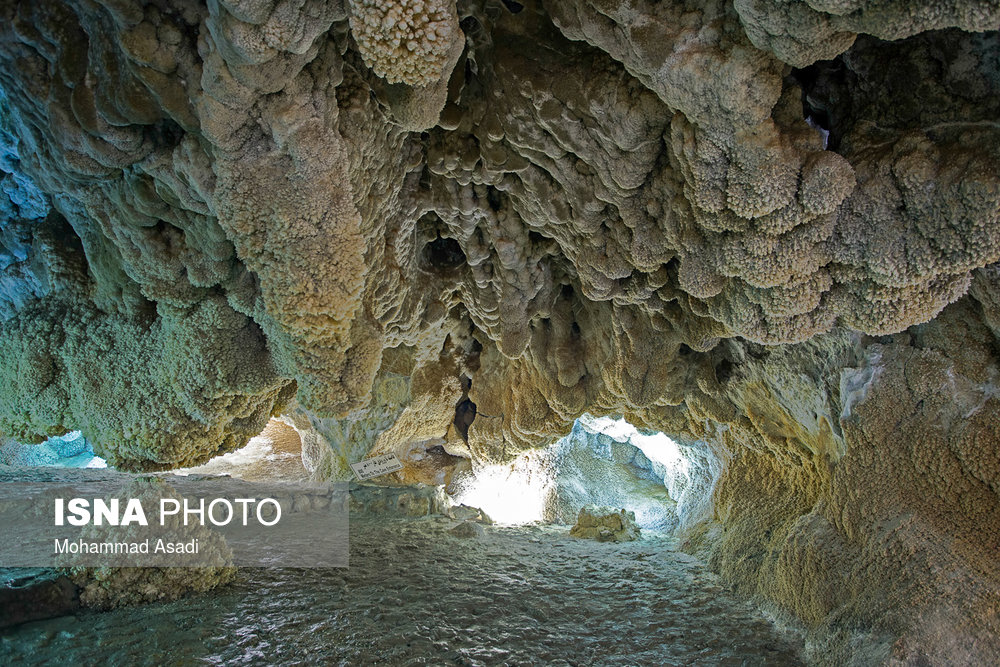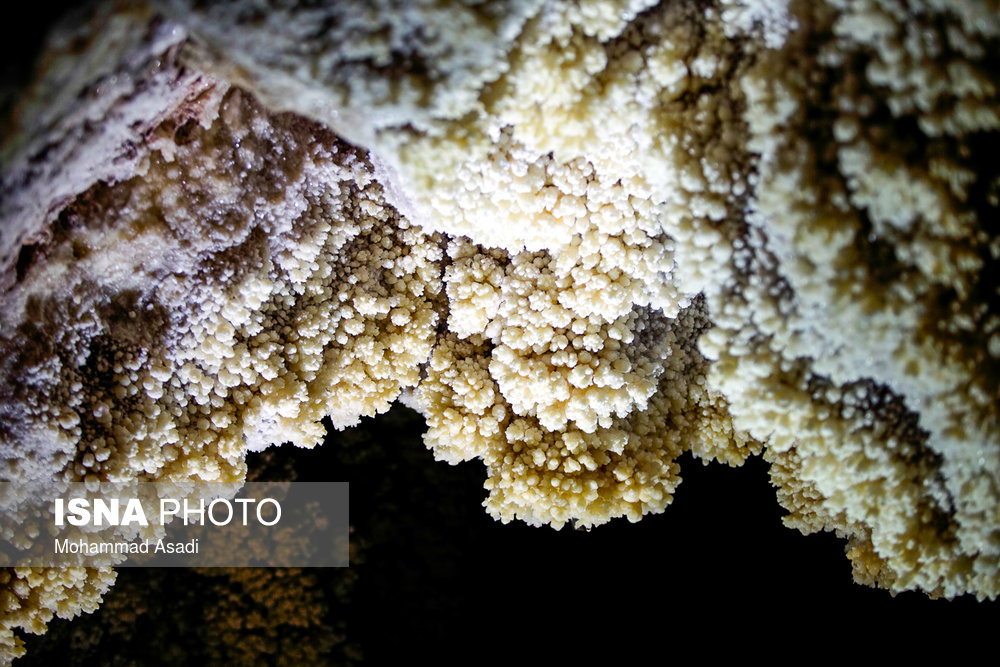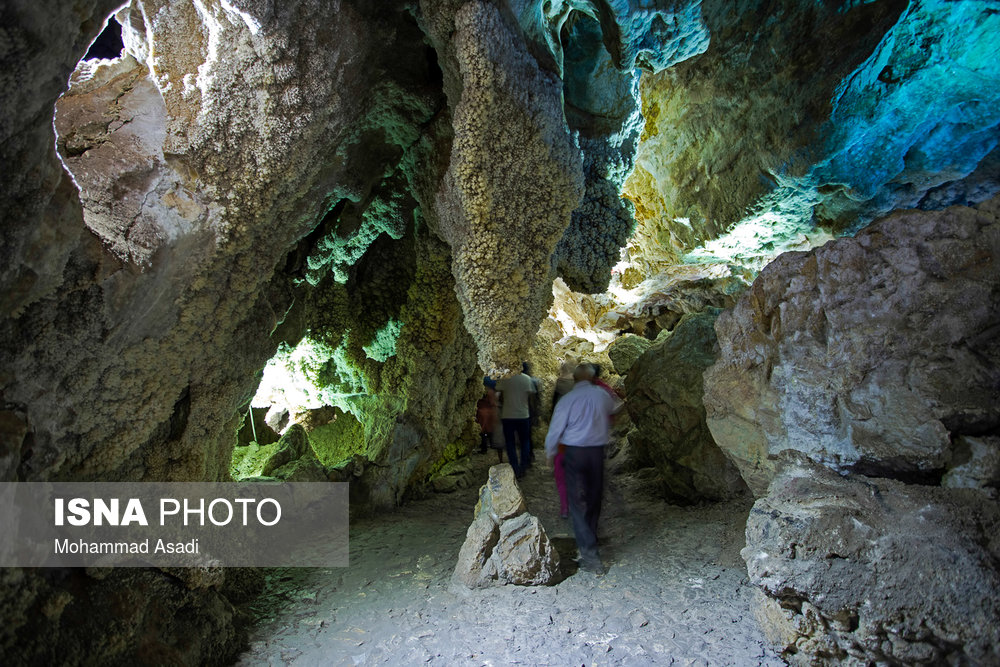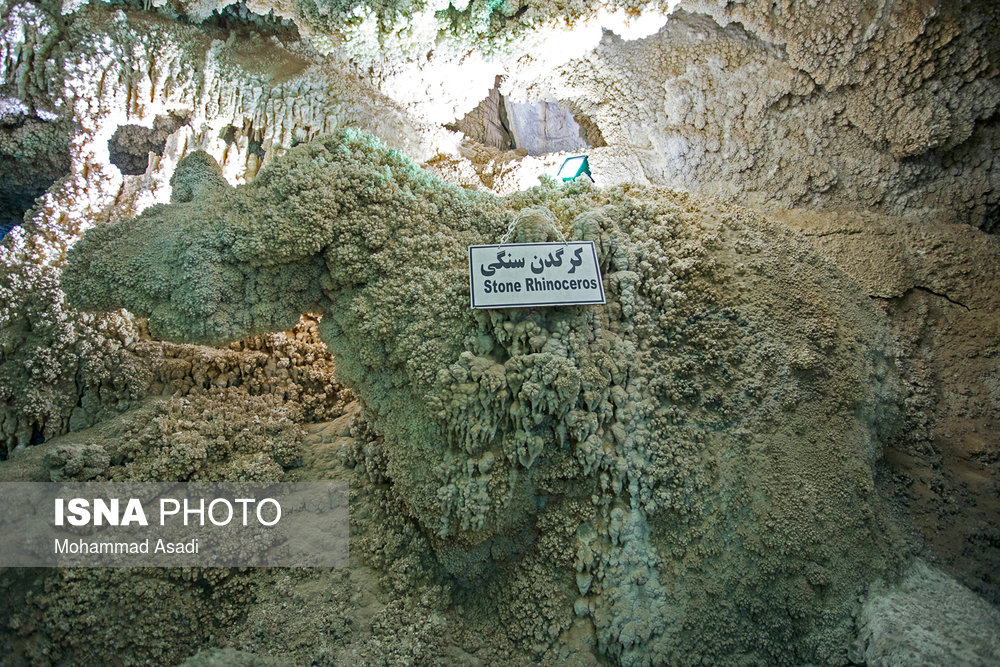The Chal Nakhjir Cave
Chal Nakhjir Cave is located in the Markazi province, in the middle of the road from Dilijan to Naraq, in the Chal Nakhjir area, and at the foot of Takht Mountain. Chal Nakhjir Cave is one of the living limestone caves in the world it is one of the layered caves and consists of three layers. About 95% of the cave walls are covered with limestone sediments and the rest are stone. Due to the discovery of 14 km of this cave, so far 1,200 meters of the cave have been paved, secured, and lit for public visits. It is said that there is a lake at the end of Chal Nakhjir cave with the possibility of sailing, but it has not been identified in general. The uniqueness of the deposits, easy access to the cave, self-repair due to being alive, and suitable air conditioning inside the cave are special features of the cave. This beautiful cave was discovered in 1368 due to a water explosion and was registered in the list of national monuments of Iran in 1384.
The root of the name
Chal Nakhjir Cave or Hohu means “below the hunting ground” and is about 70 million years old. Because Chal in Persian and Raji dialect (the language of the people of Dilijan) means bottom and Nakhjir means hunting ground. Chal Nakhjir is a hollow area and in the past hunters used to bring their game from other places to this area of Rome so that they could hunt them more easily.
The characteristic features of Chal Nakhjir cave
Chal Nakhjir cave is located in the Karsti Varan, which is expanded in dense limestone reef units, which covered Paleocene tuffs and green shales. The area appears as faulted blocks in some parts. Among the beautiful and spectacular effects of the Chal Nakhjir cave, we can mention crystal sponges, prisms, cellist and coral gardens (which have been formed over the years), various corridors, and ponds. This cave is made up of different halls, among them, Chehelston Hall is the most beautiful hall of the cave, which is covered with various abstracts and drips and stunning and beautiful colors. The other halls of the cave are the Hall of Beauty, Lake, Purgatory, Zoo, Bride’s Table, and Chihlcheragh. The smallest of these halls are 3x5x20 meters and the largest are 120x40x30 meters.
The textures and crystal lanterns of the cave have become dark and the ceiling of the cave is full of twists and turns and various fractures. Also, beautiful and decorative stones in the shapes of humans, deer, eagles, turtles, pigeons, and huge crystal statues have also been found in Chal Nakhjir Cave. Most of these stones are made of lime. Another unique feature of the cave is that it is alive, that is, if a part of the cave is destroyed or cracked, it will be restored over many years.
The access route to this cave is through the road from Dilijan to Naraq. Chal Nakhjir Cave is located next to the Jaseb Wildlife Sanctuary, 8 km east of Dilijan city and 3 km from the Dilijan-Naraq asphalt road, and on the slopes of Takht Mountain.

